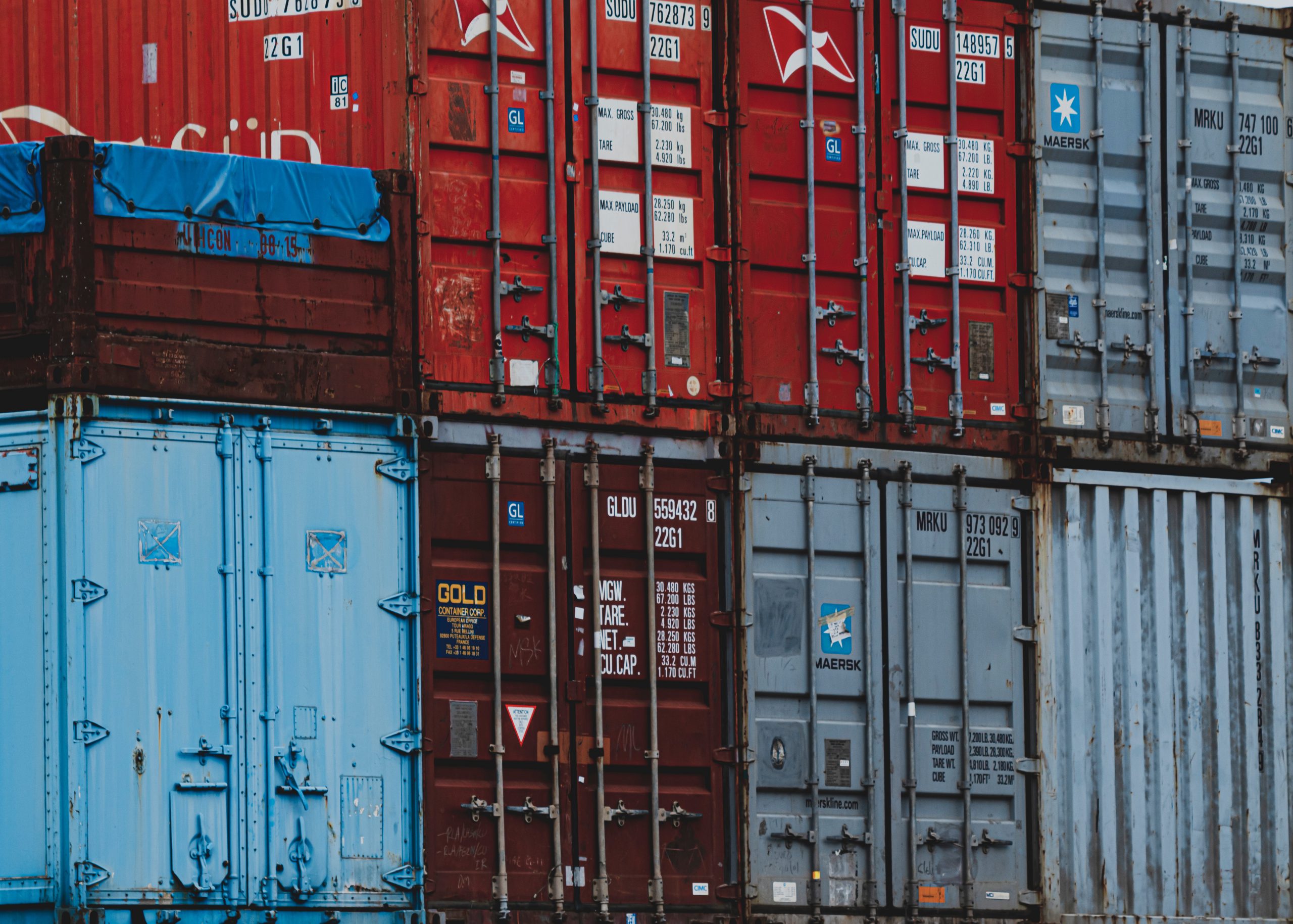When people say “shipping container” most folks know exactly what they’re talking about, steel, interchangeable, 20 or 40-foot cargo containers. But standard shipping containers also have a variety of lesser-known names, or names that are really only recognized by professionals in the industry. Let’s break down some of the most common but ill-understood names for shipping containers you might hear.

The Many Names of Shipping Containers
Modern shipping containers as we know and use them today were first standardized into their modern appearance and dimensions in the 1950s. It was during this period that shipping containers got their first colloquial name as Conex Containers.
Recommended Reading: History of Shipping Containers
What Are Conex Boxes/Conex Containers?
“Conex box” or “container” is easily the most common alternative name for standard shipping containers you’ll hear today. That’s because intermodal and standardized shipping containers were associated with a logistics model from the 1950s called Container Express. In a nutshell, this logistics model allowed more companies to take advantage of container standardization, shipping more goods across the world at cheaper prices than ever before by using the inherent advantages of the modern, shared shipping container unit. Container Express was eventually abbreviated to “ConEx” and then “Conex” as a catchall term for the standard, 20-foot or 40-foot steel shipping containers we still use today. Conex containers refer to any standardized shipping container that can be used intermodal-ly, meaning the container can transition from one type of transport to another without having to unload and reload its contents (i.e. it can go from a ship to a train to a truck).
Where Is This Name Used?
Today, you’ll mostly find shipping containers called Conex boxes or something similar at professional shipping companies or storage facilities. That’s because those organizations are likely to know the actual history behind the containers and may still use those old-fashioned names. Similarly, you can find Conex containers referred to by container warehouses and purchasing centers.
ISO Containers
The ISO acronym stands for “International Organization for Standardization”, which is the organization that handles shipping container dimension standardization, alongside the standardization of other aspects (such as material, accessories, and more). In fact, modern shipping containers must be ISO-certified to be legally used by most shipping container companies. A container that’s ISO-certified will work with most other standard shipping containers and can be passed around from company to company without much issue.
Where Is This Name Used?
Like with Conex containers, shipping containers are usually only referred to as ISO containers by shipping companies, warehouses, and stores. However, ISO containers are much more used by laymen or regular folks looking to build their own shipping container homes or businesses compared to Conex boxes or containers.
Intermodal Containers
Technically speaking, any intermodal container is a container that can transition between multiple methods of transportation without having to reload the contained cargo. All ISO-certified and Conex containers are intermodal by design, although you might occasionally find some other intermodal containers with different specifications or origins. The majority of intermodal containers, however, come in either 20 or 40-foot lengths so that they fit with other containers carried on cargo ships around the world.
Where Is This Name Used?
As with the above two terms, intermodal containers are usually referred to by shipping companies, warehouses, and professionals in the industry. The descriptive quality of the name, however, means that intermodal containers can technically be used in a lot of different areas and contexts so long as they can be moved from transport to transport without issue.
Freight Containers
Many shipping containers are called freight containers instead. This is just because they often carry freight: this word is often used as a catchall term for any large-scale or bulk goods or manufacturing materials.
Where Is This Name Used?
In general, the term “freight container” is mostly used in relation to railroads and rail transportation due to the association of the word with trains. However, this is not a hard and fast rule, and even industry professionals may sometimes refer to standard shipping containers as freight boxes or containers.
Sea or Ocean Container
As the name suggests, sea or ocean containers are shipping containers primarily used for ocean shipping or transit. They’re often referred to as such if their typical cargo rotation locks them to sea transport – for example, they may technically be intermodal containers but never see the inside of a truck or train freight car. Sea and ocean containers aren’t designed with sea-focused insulation or anti-corrosion layering by default since most of them start off as standard shipping containers. However, some companies may eventually modify their sea containers to make them even more suited for long-term ocean transit for years to come by adding additional coatings, special paint, or modifying them for water damage.
Where Is This Name Used?
You’ll most likely have your shipping containers referred to as sea or ocean containers at harbors or around shipping companies that mostly deal with ocean transport.
Recommended Reading: Lifespan of a Shipping Container
Sea Can
Sea can is another common reference to a standard but ocean-focused shipping container. Many so-called “sea cans” are bolstered with many of the modifications mentioned above, such as anticorrosive paint, insulation on the interior to prevent container rain, and so on.
Where Is This Name Used?
As with sea containers, sea can is really only used as a term by shipping companies that mostly deal with ocean-bound cargo containers.
Dry Van/Container Van
Dry van and container van are two terms that are a little rarer than all the others. These refer to shipping containers that are mostly used for dry cargo, and more often than not are containers that already have many years of service. As such, “dry” or “container vans” are often older shipping containers that have been repurposed for land-only transport (for instance, maybe their steel has worn down over time, making them unsuitable for long-term ocean transport.
Where Is This Name Used?
You’ll most often hear these terms used either with dry cargo companies or, in the case of container vans, in the Philippines, where a lot of old containers are being repurposed and refurbished right now.
Buy Your Very Own Conex Containers, Sea Cans, and Freight Containers
Whichever name you prefer, at Rent-A-Container, we’ve got your storage solution. Shop our e-commerce store for a large variety of door styles, sizes, and prices. Buying and renting shipping containers has never been easier.
